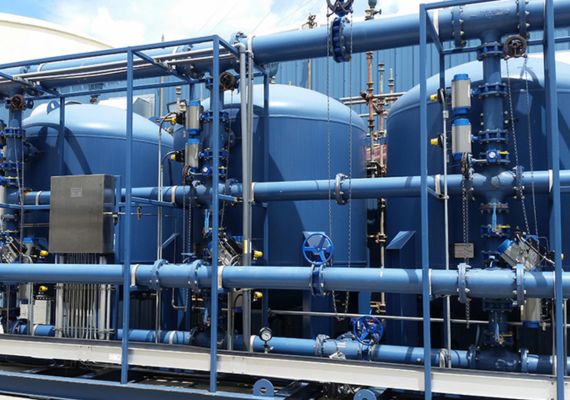Filteration

Filteration
Typical Application The following are types of filters and their usage: Dual Media Sand Filter : This filter is used to remove turbidity and suspended solids from raw water. Media implemented is Silica Sand & Anthracite with standard filtration rate of 10m³/hr/m² Iron/Manganese Removal Filter : This filter is used to remove iron and manganese from the raw water with different feed water pH at standard filtration rate of 10-12m³/hr/m². Activated Carbon Filter : This filter is specially designed for the absorption of soluble organic impurities found in water. SAND FILTER DESCRIPTION Sand filters have proven effective in removing several common pollutants from storm water runoff. Sand filters generally control storm water quality, providing very limited flow rate control. A typical sand filter system consists of two or three chambers or basins. The first is the sedimentation chamber, which removes floatables and heavy sediments.
Filter Selection Data
| MEDIA | REMOVAL Application | |
| Silica Sand | Suspended Solids | |
| Anthracite | Turbidity | |
| Birm | Iron & Manganese | |
| Manganese Dioxide | Iron & Manganese | |
| Manganese Green Sand | Iron & Manganese | |
| Activated Carbon | taste, odour, colour, chlorine, organics | |

Sand filters take up little space and can be used on highly developed sites and sites with steep slopes. They can be added to retrofit existing sites. Sand filters are able to achieve high removal efficiencies for sediment, biochemical oxygen demand (BOD), and fecal coliform bacteria. Total metal removal, however, is moderate, and nutrient removal is often low. APPLICABILITY Sand filters are intended primarily for water quality enhancement. In general, sand filters are preferred over infiltration practices, such as infiltration trenches, when contamination of groundwater with conventional pollutants – BOD, suspended solids, and fecal coliform – is of concern. This usually occurs in areas where underlying soils alone cannot treat runoff adequately – or ground water tables are high. In most cases, sand filters can be constructed with impermeable basin or chamber bottoms, which help to collect, treat, and release runoff to a storm drainage system or directly to surface water with no contact between contaminated runoff and groundwater. In general, sand filters can be used as alternatives for water quality inlets. They are more frequently used to treat runoff contaminated with oil and grease from drainage areas with heavy vehicle usage. In regions where evaporation exceeds rainfall and a wet pond would be unlikely to maintain the required permanent pool, the filtration system can be used.
Advantages And Disadvantages
ADVANTAGES AND DISADVANTAGES Sand filters can be highly effective storm water best management practices. Sand filters achieve high removal rates for sediment, BOD, and fecal coliform bacteria. The filter media is periodically removed from the filter unit, thus also permanently removing trapped contaminants. Waste media from the filters does not appear to be toxic and is environmentally safe for landfill disposal. If they are designed with an impermeable basin liner, sand filters can also reduce the potential for groundwater contamination. Finally sand filters also generally require less land than other best management practices, such as ponds or wetlands. The size and characteristics of the drainage area, as well as the pollutant loading, will greatly influence the effectiveness of the sand filter system. For example, sand filters may be of limited value in some applications because of they are designed to handle runoff from relatively small drainage areas and they have low nutrient removal and metal removal capabilities. In these cases, other best management such as wet ponds, may be less costly and/or more effective. The system also requires routine maintenance to prevent sediment from clogging the filter. In some cases, filter media may need to be replaced 3 to 5 years. Lastly, sand filters generally do not control storm water flow, and consequently, they do not prevent downstream stream bank and channel erosion. Climatic conditions may also limit the filters performance. For example, it is not yet known how well sand filters will operate in colder climates or in freezing conditions excess flow. OPERATION AND MAINTENANCE All filter system designs must provide adequate access to the for inspection and maintenance. The sand filters should be inspected after all storm events to verify that they are working as intended. Sand filter systems can be deep, designated as confined spaces and require compliance with confined space entry safety procedures. Sand filters begin to experience clogging problems within 3 to 5 years. Accumulated trash, paper and debris should be removed from the sand filters every 6 months or as necessary to keep the filter clean.

